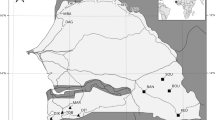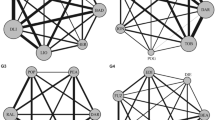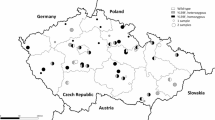Abstract
I AM able to-day to complete my note in NATURE, vol. xx. P. 29, as to the exact habitat of the black rat in Thuringia. Prof. Liebe, of Gera kindly wrote to me that it occurs in East Thuringia and the Voigtland in single elevated side-valleys of the rivers Weisse Elster and Roda, as well as in single lurking-places of the Frankenwald. Here it occurs in isolated forest-houses, in the valleys, in whole partly large villages, for instanace, St. Gangloff. In this place for a long time past Mus rattus and M. decumanus have occurred together among each other, not one above the other, on different floors, as might be supposed, though rattus now and then rather prefers the upper floors and the latter does not appear to be decreasing in number. In ihose villages about three specimens of rattus are always killed for one specimen of decumanus, the latter, apparently, being less numerous.
This is a preview of subscription content, access via your institution
Access options
Subscribe to this journal
Receive 51 print issues and online access
$199.00 per year
only $3.90 per issue
Buy this article
- Purchase on SpringerLink
- Instant access to full article PDF
Prices may be subject to local taxes which are calculated during checkout
Similar content being viewed by others
Author information
Authors and Affiliations
Rights and permissions
About this article
Cite this article
MEYER, A. Distribution of Mus rattus. Nature 20, 95 (1879). https://doi.org/10.1038/020095a0
Issue date:
DOI: https://doi.org/10.1038/020095a0



